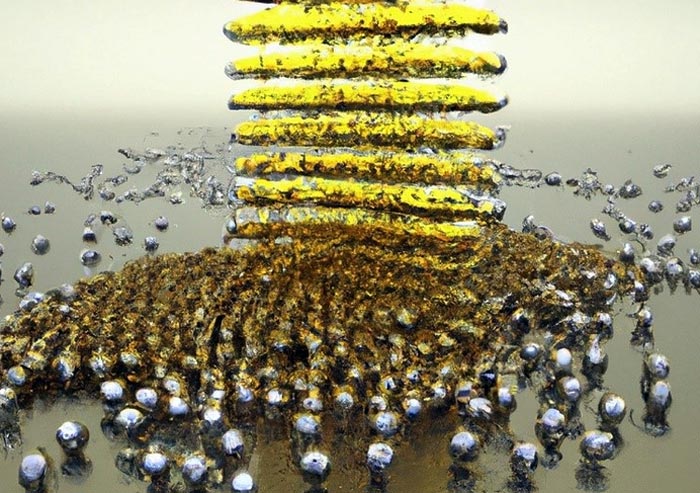Powerful Bragg reflector with ultrahigh refractive index metamaterial

Schematic showing that ultrahigh refractive index metamaterials assembled with nanoparticles can be fabricated and used as optical materials.
Credit: POSTECH
We all look in the mirror at least once a day to see our reflection. Mirrors are used not only in daily life but also in cutting-edge technologies such as semiconductor processing and high-resolution displays. Recently, a powerful Bragg reflection mirror based on high-index metamaterials has been developed that only reflects desired light.
A research team led by Professor Gi-Ra Yi (Department of Chemical Engineering) at POSTECH with the research team led by professors Seok Joon Kwon and Pil Jin Yoo (School of Chemical Engineering) at Sungkyunkwan University have together developed an ultrahigh refractive index metamaterial by closely packing gold nanospheres and a reflector that combines the metamaterial with a polymer.
Metamaterials – with properties that do not exist in nature – can be designed to have a negative (−) or ultrahigh refractive index. However, metamaterials with a high refractive index still have limitations from designing to manufacturing.
To overcome this issue, the research team developed a metamaterial that is uniformly arranged with the 1-nanometer-level gaps (nm, 1 billionth of a meter) by assembling spherical gold nanoparticles. This material, which maximizes light-matter interaction, recorded the highest refractive index in the visible and near-infrared regions. The 2D superstructures exhibited the highest-ever refractive index of 7.8.
The distributed Bragg reflector (DBR), which is made by stacking these metamaterials and polymer layers with a low refractive index, strongly reflected specific wavelengths.
Furthermore, the research team established the theory of a plasmonic percolation model that can explain the extremely high refractive index. As it theoretically explains the ultrahigh refractive index of metamaterials that could not be explained in previous studies, the development of related research fields is anticipated in the future.
This study is also garnering attention from academic circles and industry for its applicability in precise semiconductor processes and high-resolution displays.
Recently published in Advanced Materials, the study was supported by the Samsung Research Funding Center and the National Research Foundation of Korea.
Journal: Advanced Materials
DOI: 10.1002/adma.202203942
Article Title: Percolated Plasmonic Superlattices of Nanospheres with 1 nm-Level Gap as High-Index Metamaterials
Article Publication Date: 22-Jul-2022
Media Contact
Jinyoung Huh
Pohang University of Science & Technology (POSTECH)
jyhuh@postech.ac.kr
Office: 82-54-279-2415
All latest news from the category: Materials Sciences
Materials management deals with the research, development, manufacturing and processing of raw and industrial materials. Key aspects here are biological and medical issues, which play an increasingly important role in this field.
innovations-report offers in-depth articles related to the development and application of materials and the structure and properties of new materials.
Newest articles

Innovative 3D printed scaffolds offer new hope for bone healing
Researchers at the Institute for Bioengineering of Catalonia have developed novel 3D printed PLA-CaP scaffolds that promote blood vessel formation, ensuring better healing and regeneration of bone tissue. Bone is…

The surprising role of gut infection in Alzheimer’s disease
ASU- and Banner Alzheimer’s Institute-led study implicates link between a common virus and the disease, which travels from the gut to the brain and may be a target for antiviral…

Molecular gardening: New enzymes discovered for protein modification pruning
How deubiquitinases USP53 and USP54 cleave long polyubiquitin chains and how the former is linked to liver disease in children. Deubiquitinases (DUBs) are enzymes used by cells to trim protein…



